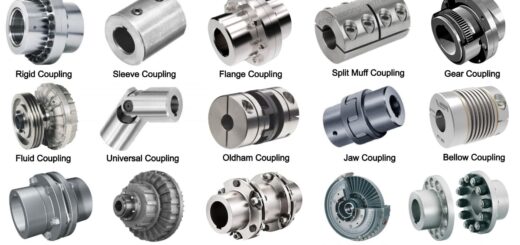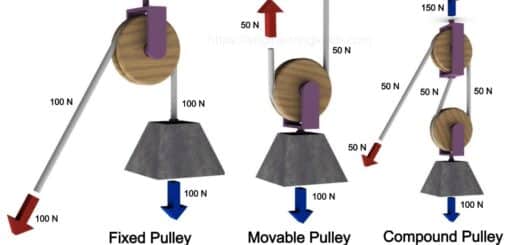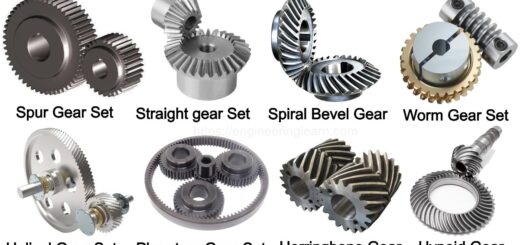What is Lever? Types, Uses, Principle & Examples [Explained with Details]
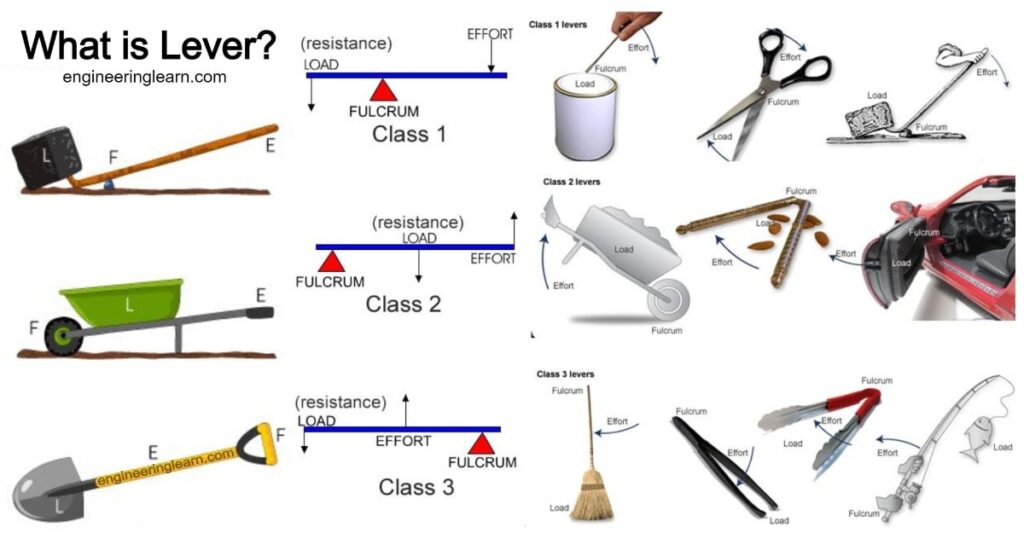
What is Lever?
What is Lever? Types, Uses, Principle & Examples :- A lever is referred to as a simple machine which is made of a rigid beam and a fulcrum. The effort which is made and is known as the input force and the load which is the output force are both applied to any of the either end of the beam. The fulcrum is known to be the point at which the beam pivots. Whenever an effort is found to be applied to any one end of the lever, the load is applied at the other end of the lever.
It is also found to be a gained mechanical advantage in any mechanical system which is found to be one amongst the six simple machines that are found to be identified by the scientists. A lever is that mechanical device which is mainly found responsible for amplifying the input force in order to provide a greater output force which is intended to provide leverage.
The ratio of the output force to that of the input force is termed as the mechanical advantage of the lever. The lever is commonly found to be a mechanical benefit device which is used to balance the amount of force against the movement.
There are three parts to all levers:
- The point at which the lever is found to rotate is known to be the Fulcrum.
- The Input force which is also termed as the effort by the force applied to the lever.
- Output force which is also termed as the load by the force applied by the lever to move the load.
Principle of Lever
Various experiments tell that there are two equal forces which are found acting in the opposite directions to each other which is clockwise and in anti- clockwise direction, and are thus applied in a uniform lever at an equal distance from the fulcrum counteract with respect to each other so that a state of equilibrium, or balance, in the lever is established.
It has been shown that there are found to be two unequal forces which are found acting in the opposite directions. This is responsible for bringing the magnitude of a force whenever the magnitude is found to be in one force. The effort which is made by the arm or lever arm is found to be equal to the product of the magnitude of the other force as well as the effort arm.
In technical terms the product of a force is referred to as the moment of force with respect to its effort. The theory of moments, states wherein equilibrium is known to be established whenever the sum of the moments of the forces which are found to be acting in an anti clockwise direction is found to be equal to the sum of the moments of the forces acting in a clockwise direction.
As a result in order to overcome a very large force at a large distance along with a very small force at a large distance from the fulcrum.
Types of Lever
There are three types of levers which are found to be known to human kind. These are as follows: first-class, second class and third class. The main difference between the three is found to be depending upon side from where the force is approaching, where the fulcrum is and where the load is.
1. First-Class Lever: ( Types of Lever )
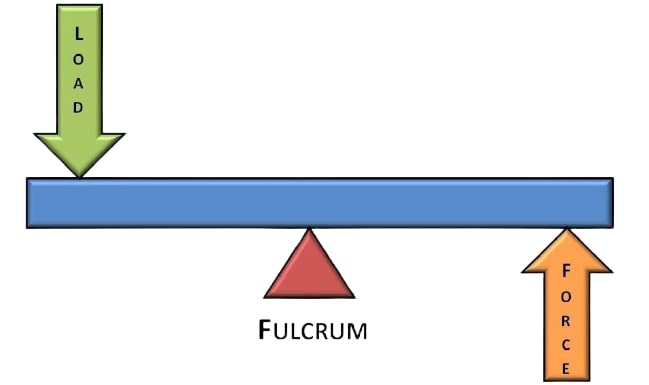
First-class levers are referred to as those which are found to have the fulcrum between the force and the load. In short it can be termed that a first-class lever is known as the effort or force which moves over a large distance in order to move the load a smaller distance and as the fulcrum is within the force and the load.
The fulcrum which is within the effort and the resistance is referred to as the force which is applied on one side of the fulcrum and load at the other side.
Examples of First-Class Lever
Here are some of the examples of first-class levers which are as follows:
- Pliers
- Scissors
- Crowbar
- Claw hammer
- See-saw
- Weighing balance
- The hand pushing objects or seesaws, crowbars.
- Using scissors shows the use of first-class levers.
- A wheel and an axle.
- Pulling a nail out of a wooden plank.
In a first-class lever, the force if found to move over a larger distance in order to move the load a smaller distance and the fulcrum is found within the force and the load.
2. Second-Class Lever: ( Types of Lever )
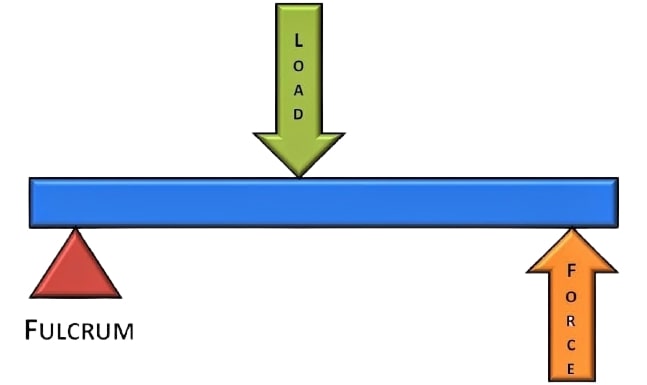
Considering the case of a second class lever, then it must be said that the load is found to be present within the effort that is the force and the fulcrum. The second class lever is the one wherein the effort is found to move over a large distance in order to raise the load a small distance.
It is important to note that the length of the effort arm is found going all the way till the fulcrum and always exceeds the length of the load arm in the second-class lever.
Examples of Second-Class Lever
In second class levers, the load is found to be present between the force and the fulcrum. One of the most common example of a second class lever is a wheelbarrow wherein the effort if found to move a larger distance in order to lift any heavy loaded material accompanied with the axle and wheel as the fulcrum. It is also noted that the effort which moves over a large distance is responsible for raising the load a small distance.
- Wheelbarrow
- Crowbar
- Nutcracker
- Bottle opener
- Brake pedal of a car
- Nail clippers
3. Third-Class Lever: ( Types of Lever )

In the third-class levers, the force is found to be present within the load and the fulcrum. For instance considering the example of a barbecue tongs can be best. It is important to note that the length of the load arm goes all the way to the fulcrum which is found always exceeding the length of the effort arm in the third-class levers.
In addition to this the third-class levers are found to be loaded in the same direction as the effort.
Because of to the effect of location on the effort in reference to the fulcrum, a bearing tool or any other tool is most commonly required in order to place the beam as it pivots. The force is responsible for finding the pull to arm from the arm. An alternative configuration is responsible to round up the arm. Whereas, it may still require a bearing in order to prevent the arm from falling to the ground.
Examples of Third-Class Lever
Looking at the examples of third-class levers, the force is found to be in between the load and the fulcrum like in the barbecue tongs.
Some other examples of the third-class levers can be a broom, a fishing rod, woomera and some more which are mentioned below.
- Tweezers
- Stapler
- Mousetrap
- Broom
- Hockey stick
Popularly known there are found to be only three types or classes of levers which are known to mankind, here the load and force are found to be located in relation with the fulcrum. The first-class levers are found to be an integer within the effort and load whereas the second-class levers are the ones where the load between the force and fulcrum. And finally talking about the third-class levers they are between load and fulcrum.
Uses of Lever
A lever is the one which is usually responsible to either moving or lifting the object. Many a times it is found being used in order to push it against any object, but not to actually move them. The levers are found having some of the main functions wherein it can be used to exert a large force over a small distance at one end by exerting only a small force.
- Levers are responsible for making it easy to lift heavy materials, remove tight objects, and cut objects.
- Hammer claws are referred to as the common levers which are responsible for helping you in removing the nails which are embedded in wood or other hard surfaces.
- Wheel bars are referred to as those which are helpful in day to day life as they allow you to transport the loads which are found to be too heavy or heavy.
- Tweezers and tweezers can be considered as the examples of levers which are found in making it easy to lift or remove the items, even if the items are not that heavy.
- Scissors is found to be one more example of a lever which is found responsible for using the force in order to cut or separate any of the required material.
Classes of Levers
By now you are done with the major classifications and details about levers. Now talking about its class then you must know that there are three basic classes of levers which have been known to mankind so far.
Levers are the devices which are classified by the relative positions of the fulcrum, force and resistance which can also be known as load. Commonly it can be said that the input force, the effort can be found equal to the output force, load or the resistance. This is the factor which is mainly responsible and also allows the proper identification of three classes of levers by the relative locations of the fulcrum, the resistance and the effort.
Class I
In the class I type the fulcrum within the effort and resistance, the effort which is found to be applied on one side of the fulcrum and the resistance on the other side.
One can consider an example of a seesaw, a crowbar or a pair of scissors, a common balance, a claw hammer. These all are the perfect examples of class-I levers.
A scissors and a pair of pliers are considered to be the example of double class I lever. It is important to note that the mechanical advantage may be greater than, less than, or equal to 1.
Class II
In the class II type the resistance (or load) within the effort and fulcrum, is referred to as the effort which is applied on one side of the resistance and the fulcrum is found to be present on the other side.
One can consider an example of a wheelbarrow, a nutcracker, a bottle opener or the brake pedal of a car wherein the load arm is found to be quite smaller than the effort arm.
It is important to note that in such classes of levers the mechanical advantage is always found to be greater than 1. This is the reason why it is also called force multiplier lever.
Class III
In the class III type the efforts within the fulcrum and resistance, is referred to as the resistance (or load) which is to be present on one side of the effort.
For instance, considering an example of a pair of tweezers, a hammer, a pair of tongs, fishing rod, common balance or the mandible of our skull.
It is important to note that in such classes of levers mechanical advantage is always less than 1. This is the reason why it is also called speed multiplier lever.
These classes and cases are the ones which are clearly described by the mnemonic fre 123 wherein the f fulcrum is within r and e for the 1st class lever, the r resistance is within f and e for the 2nd class lever, and the e effort is within f and r for the 3rd class lever.
It is important for an individual to get a knowledge about all these factors as these play a very vital role when it comes to usage at the real time.
Most of the people are found complaining about the usage of a lever, but it becomes difficult as they lack proper knowledge about it. Therefore, reading this would have cleared all your doubts and would have been knowledgeable.
Image Source :- rbcphoto, eschooltoday, Pre-Engineering Tutorials
